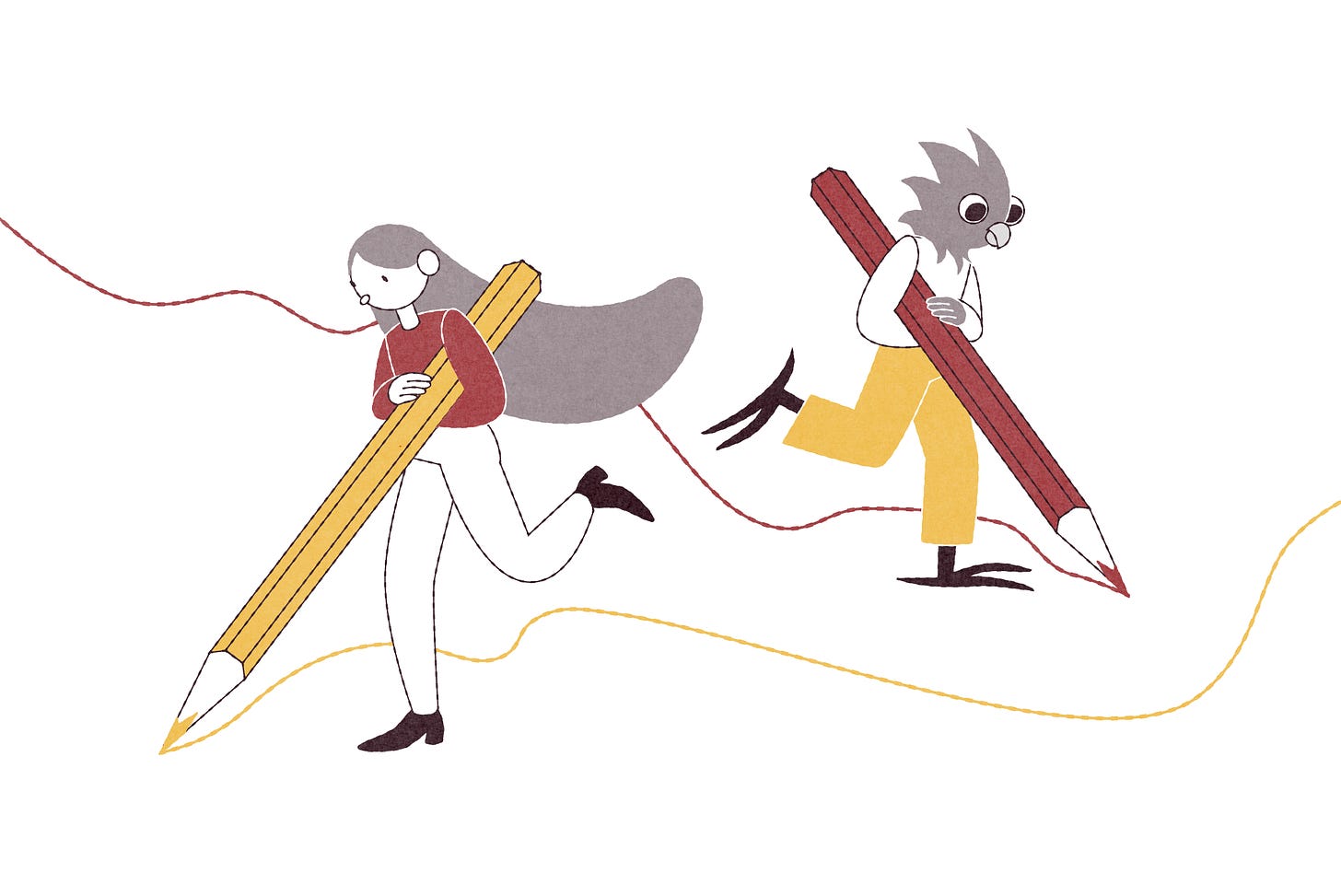Why and How to Edit Your Fiction Like a Marketer
Lesson 4 of “Steal From a Copywriter: Copy Techniques That Translate Into Creative Writing” with Sophie Campbell

Every word counts. As a creative writer, it can be tempting to luxuriate in prose, layering your sentences with beautiful descriptions, long metaphors, and carefully curated language.
While style is one of many important elements in fiction, sometimes the best way to improve your work is to remove the excess. In copywriting, every word must justify its place. It’s the same principle in creative writing, but perhaps more on a sentence-level: make each sentence serve a purpose.
When you’re editing, think like a copywriter. Ask yourself, Does this sentence push the plot forward? Does it reveal character, mood, or motive? If not, it may need to go. By trimming the fat and removing any repetitions, you sharpen the clarity and impact of your writing.
The Power of Brevity
Copywriting is all about brevity. The goal is to communicate the message in the clearest, quickest, most effective way possible, without unnecessary words. A skilled copywriter can make a compelling statement in just a few words because they know how to get to the point. The same principle can apply to fiction writing. Your story doesn’t need excess flourishes to be powerful.
Take a scene where a character is grieving. Instead of writing:
“Her tears fell like a river, cascading down her face, leaving streaks as they splashed against her cheeks. She felt the weight of her grief, as if it were a heavy stone pressing down on her chest, making it hard to breathe. The air was thick, and she couldn’t escape the suffocating feeling of loss.”
It’s a bit much. A more concise version might be:
“Her tears burned as they fell. It felt like she was treading water with grief hitching onto her leg, trying to pull her under.”
Here, the emotional impact of the scene is preserved, but without the elaboration. Brevity doesn’t mean less emotion – it means finding the strongest, clearest way to convey that emotion. This might seem like a strange example, but think of orange squash. A small splash of it in a glass is concentrated, bright, and sharp. Add water and it’s paler, weaker. Next time you’re editing your writing project, think about how you can concentrate it down.
Avoiding Fluff
Just as copywriters are taught to avoid redundancy or fluff, you should be equally diligent about editing out unnecessary details or repetitive descriptions. You don’t need to describe every nuance of a character’s outfit or the weather in each scene. A well-placed detail is far more effective than overloading the reader with information.
For example, if you’re introducing a new character, don’t list every physical characteristic:
“Her long, dark hair cascaded down her back, her bright green eyes gleaming like emeralds, and her lips were full and red, as if painted.”
Instead, focus on one or two vivid, memorable details that will capture the essence of the character, like:
“Her eyes were the color of moss after rain, rich and alive.”
This approach gives your reader a quick, lasting impression while leaving room for them to imagine the rest.
Editing With Intent



